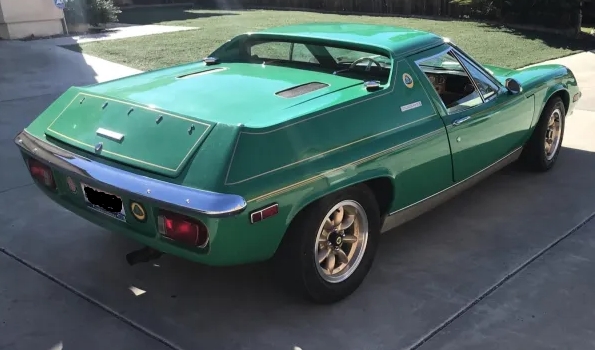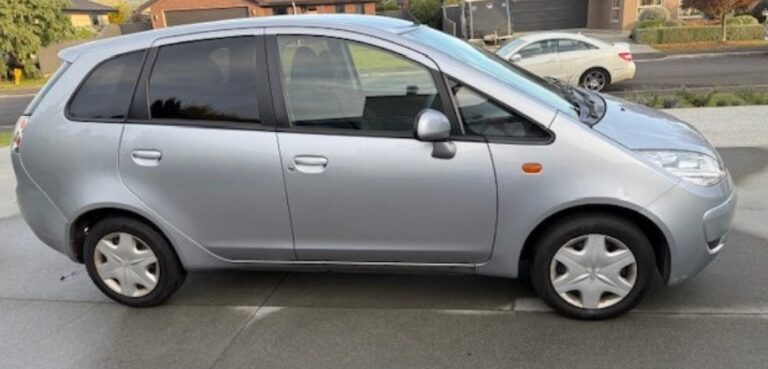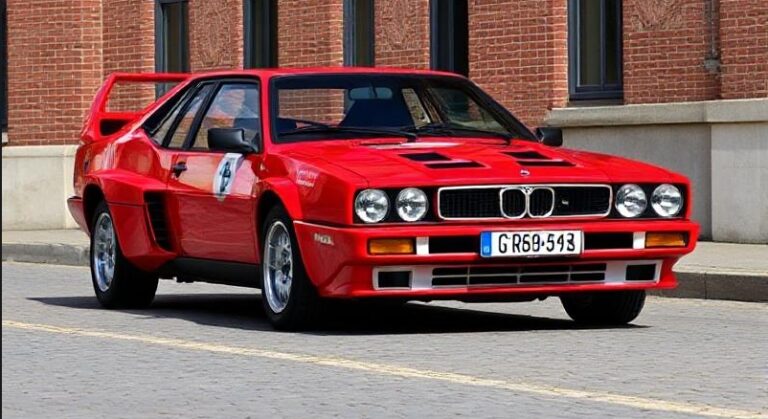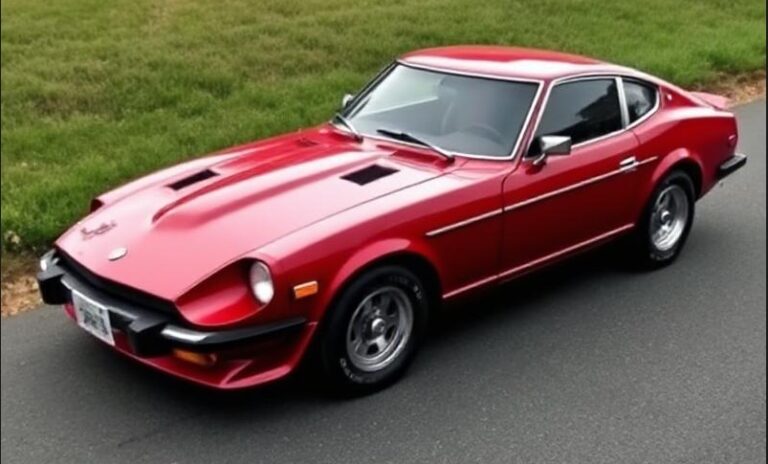The Breadvan Becomes a Beauty: The Evolution of the Lotus Europa
In the pantheon of classic sports cars, few machines so perfectly embody their creator’s philosophy as the Lotus Europa. Born from the singular vision of Colin Chapman, the Europa was a rolling testament to his mantra: “Simplify, then add lightness.” It was a bold, unconventional, and audacious experiment that brought the sophisticated mid-engine layout, previously the preserve of exotic racing prototypes and supercars, to a more accessible market. Over its nine-year production run, the Europa underwent a remarkable metamorphosis, evolving from a spartan, uncompromising purist’s machine into a refined and potent sports car that remains an icon of British automotive engineering.
The Genesis: Type 46 – The Series 1 (1966-1968)
The story of the Europa begins in the mid-1960s, a period of fervent innovation in motorsport. The mid-engine revolution, pioneered by Cooper in Formula One, was proving its dynamic superiority. Colin Chapman, ever the innovator, saw an opportunity. He envisioned a road car that would capture the essence of a racing car: lightweight, aerodynamically efficient, and with its mass centralized for sublime handling.
The project was initially conceived as a potential bid to build a replacement for the Renault-owned Alpine A110, and this French connection would prove pivotal. Unveiled at the Brussels Motor Show in January 1967, the Lotus Type 46, or Europa Series 1, was a visual shock. Designed by Ron Hickman, its most defining feature was its “flying buttress” or “Kammback” rear deck, which extended from the roofline back to the tail. This design, while aerodynamically sound with a drag coefficient of just 0.29, earned the car the somewhat unflattering nickname “the breadvan.”
Underneath this radical fibreglass shell lay a classic Lotus steel backbone chassis, similar in principle to the one used in the Elan. This provided immense torsional rigidity for a minimal weight penalty. The body, however, was bonded directly to this chassis, creating a semi-monocoque structure. While this contributed to the car’s featherlight curb weight of just 610 kg (1,350 lbs), it made accident repairs a nightmare.
True to its initial design brief, the powertrain was sourced from Renault. The engine was the 1,470cc inline-four from the Renault 16 saloon, mated to its corresponding four-speed transaxle. Lotus worked its magic on the humble French unit, fitting it with a higher compression ratio and a new intake manifold, boosting its output to a respectable 82 horsepower. While not a powerhouse, in a car this light, it was enough for lively performance.
The Series 1 was uncompromising to the extreme. The seats were fixed, with drivers adjusting their position by moving the pedal box. The side windows were also fixed in place, and the interior was spartan, to say the least. In a curious marketing decision, the car was initially sold exclusively in continental Europe. Subtle variations existed, known as the S1A and S1B, with the latter introducing minor improvements like removable side windows. The Series 1 was the Europa in its purest, rawest form—a car for drivers who valued telepathic handling above all else. Approximately 644 were built.
A Step Towards Civility: Type 54 & Type 65 – The Series 2 (1968-1971)
By 1968, Lotus recognised that for the Europa to achieve wider commercial success, it needed to be more than just a track toy for the road. The Series 2, designated Type 54, was introduced with a raft of changes aimed squarely at improving usability and build quality.
The single most important change was the abandonment of the fully bonded body. The Series 2’s fibreglass shell was now bolted to the steel chassis. This seemingly small change had huge implications: it simplified the production process, drastically reduced repair costs, and helped quell some of the creaks and groans that emanated from the earlier cars.
The cabin received a much-needed dose of comfort and convenience. The fixed seats were replaced with adjustable runners, electric windows became standard, and a polished wooden dashboard fascia replaced the stark facade of the S1, lending the interior a more upscale feel. The Renault 16 engine remained, but small improvements to the bell housing and clutch mechanism made the car slightly more mechanically robust.
In 1969, the Europa was finally made available in its home market of the United Kingdom. More significantly, Lotus set its sights on the lucrative American market, leading to the creation of the Type 65, or Federal-spec Series 2. To meet stringent US safety and emissions regulations, the car required several modifications. The headlights were raised to meet minimum height requirements, the front indicators were changed, and the chassis was slightly altered. The engine was a larger-but-less-powerful 1,565cc Renault unit, tuned for lower emissions, which blunted the car’s performance. Despite these compromises, the Series 2 was a crucial step in the Europa’s maturation, proving that Chapman’s minimalist concept could be adapted for a broader audience. Approximately 3,615 Series 2 models were produced.
The Power It Deserved: Type 74 – The Twin Cam (1971-1975)
For all its handling prowess, the one persistent criticism leveled at the Europa was its modest straight-line performance. The Renault engine, while willing, simply didn’t have the power to match the chassis’s immense capabilities. This all changed in 1971 with the introduction of the Type 74, the car that would define the Europa’s legacy: the Europa Twin Cam.
Lotus replaced the French engine with its own celebrated 1,558cc Lotus-Ford Twin Cam engine, the same unit that had powered the legendary Elan Sprint. With a healthy 105 horsepower, the Twin Cam transformed the Europa from a nimble momentum car into a genuinely fast sports car. The 0-60 mph sprint now took a little over seven seconds, and the car felt alive with a newfound urgency.
This new heart necessitated other changes. The Renault transaxle was retained but was now a stronger Type 352 unit to handle the extra power. To improve the car’s practicality and address the most significant design flaw, Ron Hickman’s original flying buttresses were cut down. This dramatically improved rearward visibility, a constant complaint on earlier models, and gave the car a more conventional, albeit still aggressive, fastback profile. New alloy wheels and “Twin Cam” badging completed the visual update.
The Europa Twin Cam was the car it was always meant to be. The sublime, communicative steering and perfectly balanced chassis were now paired with an engine that delivered thrilling performance and an exhilarating soundtrack. It was a harmonious blend of power and poise, cementing the Europa’s status as one of the finest handling cars of its era.
The Pinnacle of Performance: The Twin Cam Special (1972-1975)
Just a year after the Twin Cam’s debut, Lotus pushed the envelope further with the introduction of the Europa Twin Cam Special in 1972. This model represented the ultimate evolution of the platform. The key upgrade was the fitment of the “Big Valve” version of the Twin Cam engine, which, with larger intake valves and a higher compression ratio, boosted power to an impressive 126 horsepower. This dropped the 0-60 mph time to a blistering six seconds, putting the lightweight Europa in the performance territory of much more expensive machinery like the Porsche 911.
Initially, the Special came standard with the four-speed Renault gearbox, but soon after, the highly sought-after Renault five-speed transaxle (Type 365) became an option. This new gearbox not only provided an extra ratio for more relaxed high-speed cruising but also had a more robust reputation than the four-speed unit.
To celebrate their Formula One World Championship victories with driver Emerson Fittipaldi and sponsor John Player, Lotus offered the most iconic version of the Europa: the JPS Special. These cars were finished in the team’s stunning black and gold livery, complete with gold pinstriping and gold alloy wheels. Each of the initial limited run of 100 cars featured a numbered plaque on the dashboard, making them instant collector’s items. The JPS livery proved so popular that the black and gold color scheme became a regular option for the Special’s production run.
The Twin Cam and Twin Cam Special models, which together accounted for approximately 4,710 units, were the final and most accomplished iterations of the Europa. They represented the full realisation of Chapman’s vision: a car with the soul of a racer, refined just enough for the road, delivering an unfiltered and unforgettable driving experience.
.
THIS could come in handy for your auto garage (and everywhere else!):

.
Production of the Lotus Europa ceased in 1975. Over its nine-year lifespan, just under 9,300 cars were built. It was a car born from a radical concept, honed through incremental improvements, and perfected with the addition of a world-class engine. From the raw, insular Series 1 to the potent and celebrated JPS Special, the Europa’s evolution is a fascinating story of a brilliant idea being refined to its ultimate potential. It remains a watershed moment for Lotus and a timeless icon for anyone who believes that in a sports car, balance, feel, and lightness are what truly matter.







